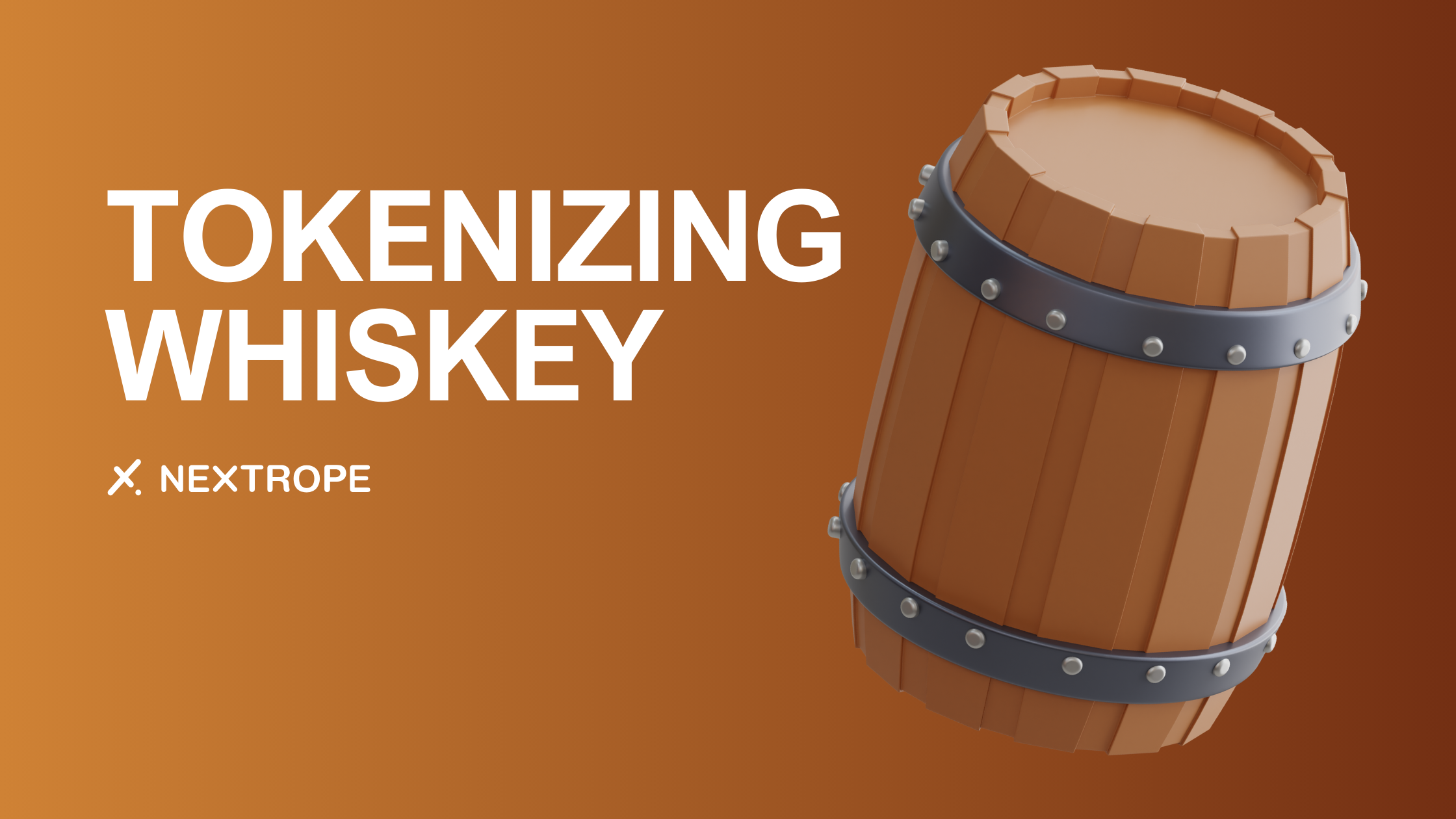In recent times, we have observed a striking convergence of traditional assets and advanced technology. The idea of tokenization, where physical assets such as real estate or artwork are transformed into digital tokens, exemplifies this intersection. As industries explore inventive methods to integrate the physical and digital worlds, the whiskey market does not lag. The notion of “tokenizing whiskey” is more than just innovative; it could potentially revolutionize the investment arena. However, what does it genuinely entail to tokenize an asset like whiskey, one that has endured the test of time?
Understanding Tokenization
Fundamentals of Tokenization
Tokenization involves converting the ownership rights of a tangible asset into a digital token, often using blockchain technology. This allows assets to be divided, purchased, sold, or exchanged on digital platforms without needing to transfer the physical asset itself. Consider it as possessing a digital proxy of your stake in an asset. For example, you might own a token representing a portion of an artwork’s worth rather than owning the entire piece.
The Functioning of Tokenization
To tokenize an asset, it is usually documented on a blockchain – a decentralized and unalterable ledger. This guarantees secure, transparent, and incorruptible ownership and transactions associated with the token. Once recorded on the blockchain, these tokens can be traded on different platforms, enabling increased liquidity and accessibility. In terms of whiskey, this could involve tokenizing either a scarce bottle or an entire barrel, granting multiple people the opportunity to own a “share” of it.
The Value of Whiskey as an Asset

More than a simple drink, whiskey signifies craftsmanship, history, and terroir, with its worth reaching beyond mere flavor.
The Historical Importance and Worth of Whiskey
With its origins deeply rooted in various cultures ranging from the Scottish Highlands to the American South, whiskey serves as a symbol of human ingenuity and tradition. Collectors and enthusiasts consider rare vintages and one-of-a-kind blends priceless for the stories they hold from bygone eras.
Whiskey Investment’s Expanding Market
Over recent decades, whiskey has risen as a profitable investment opportunity. Limited editions and rare vintages have consistently seen their value grow, sometimes surpassing traditional investment methods. Record-breaking sales reported by auction houses and specialized trading platforms highlight the financial potential of this golden spirit.
Advantages of Whiskey Tokenization

Whiskey tokenization presents a novel approach to owning, trading, and appreciating this ancient spirit in today’s digital age.
Fractional Ownership and Accessibility
Tokenization opens up the world of whiskey investment to everyone. Owning an entire bottle or cask is no longer necessary to have a stake in it. Digital tokens representing fractional ownership allow a wider audience to invest and share in the potential gains of valuable whiskeys.
Enhanced Liquidity
Selling a rare whiskey bottle or cask can be tedious and may not always garner its real value due to market constraints. Tokenization allows these assets to be traded on digital platforms, providing heightened liquidity for owners to take advantage of their investments more quickly.
Provenance and Transparency
The foundation of tokenization, blockchain technology, guarantees the authenticity and origin of tokenized whiskey. This significantly reduces fraud chances, ensures accurate product valuation, and maintains a transparent record for every individual involved in the token’s lifespan.
Potential Challenges and Criticisms

Tokenization has the potential to expand investment opportunities and boost market liquidity, but it relies heavily on technological infrastructure. Not everyone possesses technical skills, and incorporating blockchain platforms into conventional investment tactics may discourage some people. Moreover, as with any digital system, inherent risks such as hacking or technology malfunctions exist.
Whiskey, like wine, boasts a rich heritage and a devoted community of purists. There is a worry that the tokenization of whiskey might weaken its historical and cultural importance. Many traditionalists believe that whiskey should be enjoyed, collected, and shared in tangible form rather than being traded as digital tokens. Additionally, there is concern that tokenization might turn whiskey into a mere commodity, leading its artistry and heritage to be overshadowed by investment profits.
Tokenized Whiskey’s Future

Despite its obstacles, whiskey tokenization offers a world full of potential. As digitization becomes increasingly prominent, even traditional sectors are likely to adapt and transform.
- Joint Ventures. Tech companies and esteemed whiskey brands may collaborate, merging tradition with innovation. These alliances could maintain the essence of whiskey while catering to the evolving investment landscape.
- All-encompassing Investment Portfolios. Tokenizing whiskey can enable individuals who lack expertise to invest in and reap the rewards of rare and vintage bottles’ appreciation. This will result in a more inclusive whiskey market, attracting a broader array of investors.
- Improved Verification and Authenticity. As tokenization becomes more widespread among whiskeys, advancements in technology will follow suit. Blockchain can be employed to confirm the authenticity of each bottle or cask, offering traceable histories that verify origin and ownership.
- Dedicated Marketplaces. Specialized platforms and exchanges for trading tokenized whiskeys may emerge in the future, featuring expert evaluations, historical information, and investment patterns.
In summary, although whiskey tokenization is still in its early stages, it possesses the potential to transform both investment and the esteemed world of whiskey. The true extent of its influence remains to be seen, but the path ahead looks promising.
Conclusion
Tokenizing Whiskey: the Next Big Investment Trend? As we stand on the cusp of a transformative period in the realm of whiskey – a world deeply rooted in tradition and heritage – tokenization emerges as a game changer. By combining the intricate characteristics of this esteemed spirit with state-of-the-art blockchain technology, fresh investment opportunities and a widened appreciation for whiskey’s worth come into play. Although certain obstacles might emerge, the potential gains are immense. Whiskey tokenization exemplifies the ever-changing nature of both investment and tradition, as the boundaries between the physical and digital worlds become indistinguishable. The future calls out to us, presenting a reality where savoring a sip of whiskey could simultaneously represent a taste of the digital age.
Read also: Wine Investment: NFTs and Tokenization



